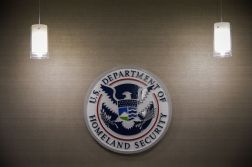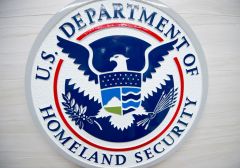The neo-noir world of “Minority Report” — well, the ubiquitous facial scanners, at least — is a few steps closer, thanks to three years of clandestine U.S. government research.
The Department of Homeland Security has been making quiet progress on a facial recognition system since 2010, according to documents released through a Freedom of Information Act request and passed on to The New York Times.
The project, called Biometric Optical Surveillance System, or BOSS, was tested last fall after two years of research by Electronic Warfare Associates, funded with a $5.2 million federal contract, according to the documents. But while BOSS improved dramatically over the two years, DHS ultimately determined it was not ready for police departments. Still, privacy advocates say the debate must happen now over how this system should be implemented (as it very likely will be in a few years, according to experts the Times interviewed).
At its base level, BOSS is a crowd-surveillance program. Originally meant to locate potential threats in war zones — specifically, Afghanistan and Iraq — DHS soon took up the project to develop it for domestic police forces. In practice, the system is essentially two towers taking pictures of people from different angles. A computer then blends those pictures together to create a “3-D signature” of each person’s face, which can then be cross-referenced with any database containing facial structure information, according to the documents.
Electronic Warfare Associates was hoping the system could match faces with 80 to 90 percent certainty up to 100 meters away, according to interviews the Times conducted with the company’s researchers. While BOSS met those goals at close range under ideal lighting conditions, it struggled with shading, distance and processing time — which dropped from six to eight minutes to 30 seconds, but were still not quick enough.
Still, whether it’s months or years, and whether it’s BOSS or a similar project, a system will eventually hit these metrics. And some police force will start matching up faces. Which leads to the questions: Whose face should be in the database? Where should the surveillance system be allowed?
Privacy advocates — including Ginger McCall, who filed the original FOIA request — worry the nationwide driver’s license database could become a comprehensive facial recognition database.
And though it might be years until the government has the computing power to run “3-D signatures” against such an extensive database, incidents like the Boston Marathon bombing — which relied heavily on video surveillance to collect evidence — will continue to fuel the conversation.






